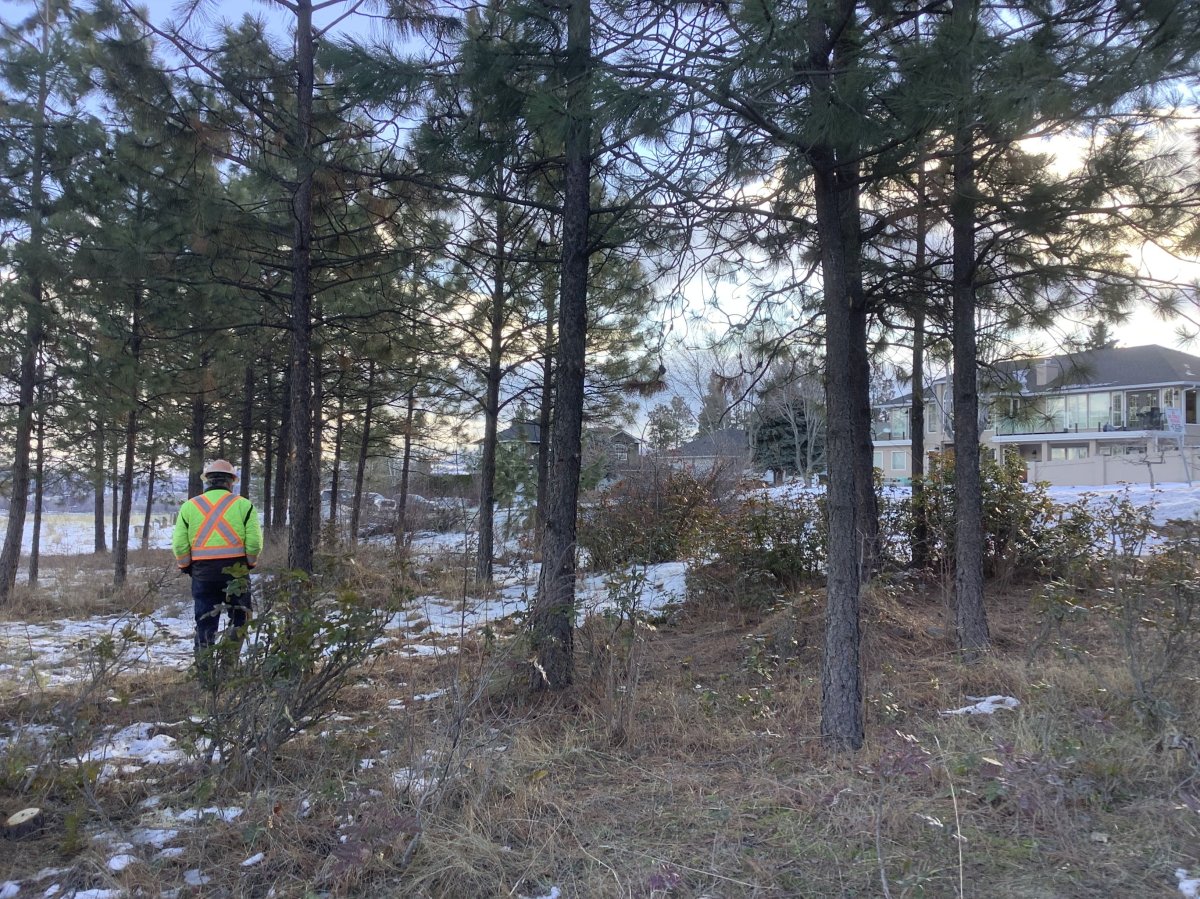Prescribed burns aimed at slowing the spread of potential wildfires have taken place across B.C.’s Interior in recent weeks.

Many may not realize the future-looking practice has its roots in Canada’s history.

Westbank First Nation completed wildfire mitigation work on over 66 hectares of its land this week. From November 2021 to April 2022, nine parcels of land were identified and combed through by wildfire forestry crews who removed dead and hazardous trees, ladder fuels and brush vegetation to slow future wildfires that could move through the area. WFN contracted Ntityix Development Corporation, which worked with Tronson Logging Ltd. to facilitate the mitigation work.
“With the increase in wildfire intensity we have seen over the past few years, this mitigation work has come at an optimal time,” WFN Chief Christopher Derickson said in a press release. “There is an interconnectedness between the land and our people. We are responsible for both. We are always thinking about the future of our children, and how we can sustain our world seven generations into the future.”
- Trudeau tight-lipped on potential U.S. TikTok ban as key bill passes
- Canadian man dies during Texas Ironman event. His widow wants answers as to why
- Hundreds mourn 16-year-old Halifax homicide victim: ‘The youth are feeling it’
- On the ‘frontline’: Toronto-area residents hiring security firms to fight auto theft
In the past, cultural burning practices on the land played a large role in alleviating the spread of wildfires. Hand treatment mitigation work is still practised today. Removing ladder fuels and widening the spacing between trees by thinning, pruning, piling and burning creates a better defence against the increased intensity of recent wildfires.
“In most of the treatment units our primary focus was to maintain the health and the fire resiliency of the forest by removing diseased trees, surface and ladder fuels, as well as the lower branches of the remaining trees,” Dave Gill, NRLP’s general manager of forestry, said. “This prevents a fire’s ability to easily move from tree to tree and to stay on the ground.”

The Okanagan Indian Band is also looking at expanding its use of prescribed burns, a practice whose need was highlighted during the White Rock Lake fire.
“We have a long history amongst our people of using prescribed burns for management of the lands,” Syilx elder Dora Alexis and Okanagan Indian Band Chief Byron Louis said in an interview last October.
“If you came into this valley over 150 years ago, you’d see grasslands on the hills and you would see a small line going along the top, which was the timberline. Each and every spring that would be burnt to ensure we didn’t get all this heavy buildup (of fuels) on the ground.”
Louis said in the early 1900s Indigenous people were actually arrested for conducting traditional burns in the North Okanagan.
Now the chief is an advocate for managing the forest to manage fires and would like to see the prescribed burns done on an annual cycle in accordance with traditional practices.
“I think there needs to be an understanding that we do have something to offer as Okanagan people or as Syilx people. We have thousands of years of knowledge that is based upon this ecology. We were here. We’ve been always here,” Louis said.
The WFN’s prescribed burn was completed in part due to $280,000 in grant funding through the Community Resiliency Investment Firesmart Community Program to complete this round of wildfire mitigation work.
—with files from Megan Turcato




Comments